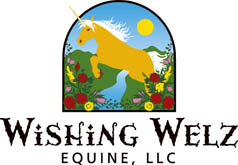Phoenix, Hot Spot for Hoof Problems?
by Yvonne Welz ©2006
Before my horse foundered, I had no idea just how many lame
and hoof-sore horses surrounded me. My local area may not have any more hoof
problems than any other area of the country. Yet when I put the pieces together,
a very interesting picture forms--one of the worst possible living conditions
imaginable.
Phoenix horses have certain "trends" in how they are kept. Here
are my observations from a decade of living in this often harsh climate:
1) Most horses in this area are shod, without question.
The area is very rocky, with hard pan desert ground and little vegetation.
Any of the parks available for trail riding are extremely rocky. It is assumed
that horses cannot travel this terrain without "hoof protection". Even the
arena horses are shod, because that is the way things are done for the show
ring.
2) Because of our "mild" winter climate, the majority of riding
and showing occurs in the winter months, therefore horses' shoes are never
pulled for the winter. Horses wear their shoes 12 months per year.
3) The climate itself is taxing on the horses. The summertime
temperatures can reach as high as 122, and we can have endless weeks of
temps in the 'teens. Many horses do have the onset of their founder in the
summer (including my own horse). Even the ground can get hot enough to fry
an egg (or a hoof!) This heat coupled with the extreme dryness of our climate
further dries out the hooves.
4) Even the pleasant winter months cause a problem. The horse's
body tells him to grow a thick winter coat (and nighttime lows get into the
upper 20's/low 30's), yet daytime highs can reach the 70's and even higher.
Quite a challenge. Most people blanket their horses in the winter,
to keep down the growth of the winter coat, and all show horses are body-clipped,
because winter is our show season.
5) There is little to no pasture available in Phoenix. Land
is at a premium, and water is at a higher premium. As a result, most horses
live in open, covered stalls (there are few actual barns). Many live literally
in people's backyards on as little as 1/2 acre lots which includes the human
home, often much larger than the horse's home!
6) Without grass pastures, most Phoenix horses have to eat hay
as their sole food source. Alfalfa grows well in the desert with less water,
so alfalfa is cheap and plentiful. Grass hay must be brought in from up north,
so it is much more expensive. Many horses live on all alfalfa diets,
and many of the larger stables actually feed an all pelleted diet only, with
no hay available at all.
So what do we have hereŠan area where a majority of the horses
live in stalls, wear shoes, eat alfalfa diets, and endure an extremely stressful
climate. These conditions will cause hoof problems anywhere!
©2006 by The Horse's Hoof. All rights reserved. No part of
these publications may be reproduced by any means whatsoever without the written
permission of the publisher and/or authors. The information contained within
these articles is intended for educational purposes only, and not for diagnosing
or medicinally prescribing in any way. Readers are cautioned to seek expert
advice from a qualified health professional before pursuing any form of treatment
on their animals. Opinions expressed herein are those of the authors and do
not necessarily reflect those of the publisher.
